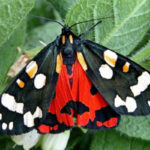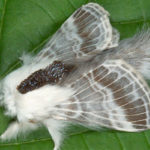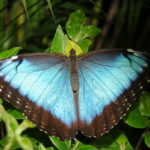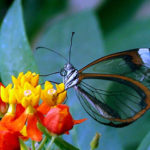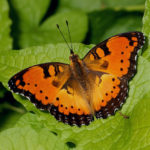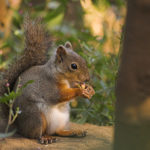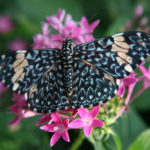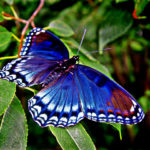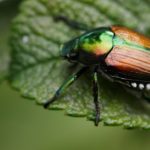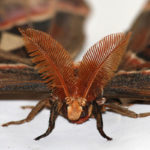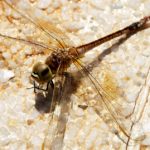Moths
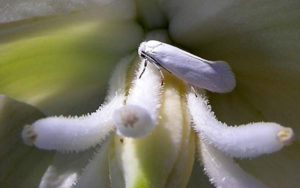 One of the most dangerous pests of fur, wool and furs in the central strip of Russia is a furniture moth (Tineolafurciferella). It is a small butterfly (wingspan of 1-1.5 cm) with yellowish or dark yellow fore wings and yellowish-gray hind wings; Both pairs of wings are shiny, with a noticeable golden hue. The female lays eggs for two weeks and during this time can postpone up to 300 eggs. Development is rapid: a cycle of one generation lasts from 2 to 4 months. For a year, up to four generations are replaced, and therefore flying butterflies can be seen almost all year round. Caterpillars molt 6-8 times. They weave silk tubular moves, weaving in them the remains of food and excrement. Pupation occurs at the end of the stroke in a loose cocoon. Pupa develops from 7 to 18 days. In Fig. 13 shows various types of moths.
One of the most dangerous pests of fur, wool and furs in the central strip of Russia is a furniture moth (Tineolafurciferella). It is a small butterfly (wingspan of 1-1.5 cm) with yellowish or dark yellow fore wings and yellowish-gray hind wings; Both pairs of wings are shiny, with a noticeable golden hue. The female lays eggs for two weeks and during this time can postpone up to 300 eggs. Development is rapid: a cycle of one generation lasts from 2 to 4 months. For a year, up to four generations are replaced, and therefore flying butterflies can be seen almost all year round. Caterpillars molt 6-8 times. They weave silk tubular moves, weaving in them the remains of food and excrement. Pupation occurs at the end of the stroke in a loose cocoon. Pupa develops from 7 to 18 days. In Fig. 13 shows various types of moths.
The moth (Tineola biselliella), which is somewhat smaller in size (the wingspan is 0.9-1.2 cm) and a lighter, straw-colored, golden-shimmed wing color, is very similar to the furniture mole. Its caterpillars do not weave tubular moves, but live under a canopy woven from the remains of food and excrement. It has less fertility (60-100 eggs) and a longer duration of the development cycle (9-16 months).
In addition to these two types, fur and wool products are often damaged by a fur coat (Tineola pellionella), which resembles a furniture size, but differs in color from the wings: on each wing of the front pair, on a golden brown background, there are three to four dark brown dots or spots . Caterpillar moth lives from May to September in a portable flattened sheath of silk, to the construction of which she proceeds immediately after hatching from the egg. After the moult, the caterpillars build an old case and if the caterpillar gives a substrate of a different color, then the sheaths will also come with colored “growth rings”. The caterpillars which have stopped feeding climb on ceilings or cornices and, attaching there their platens in a steep position, remain in them till the spring. In April the caterpillars molt for the last time and in most cases, after leaving the old case, they build a new one, in which they pupate.
The amount of material eaten by the caterpillar over the entire period of its development depends on the type of moth, the quality of the material, and also on the temperature and relative humidity of the air. In a thin floating woolen fabric, the caterpillar gnaws through the opening a day. When mass multiplication of moths, unprotected material of keratin nature can be completely destroyed. The digestive juice produced by moth caterpillars has an alkaline medium (pH 9.9), and keratin has a low chemical resistance to alkali. Food damage to the moth can also cause mixed tissues, and eats them more intensively, because the synthetic thread is not absorbed by them and the nutritional content of such a tissue is lower than that of wool.

